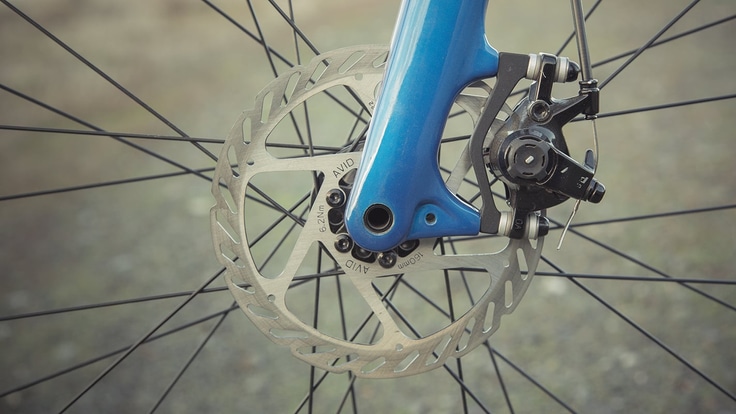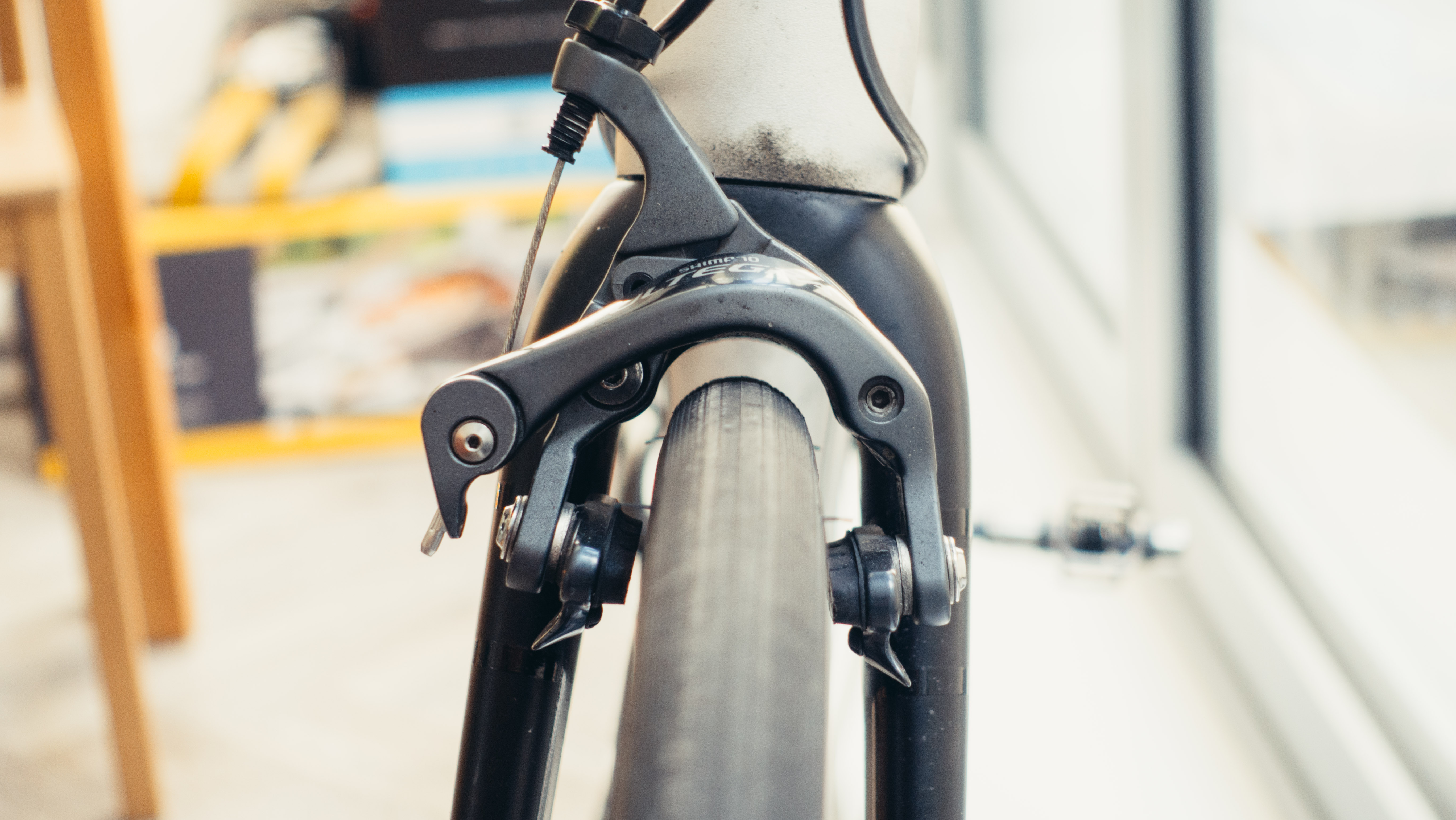Disc Brakes vs. Rim Brakes: Which is Better for Your Needs?

When it comes to cycling, one of the most important decisions a rider can make is choosing the right type of braking system. Brakes are an essential part of your bike's safety and performance, and two main options dominate the cycling world: disc brakes and rim brakes. Both have their pros and cons, and the right choice depends on your specific riding style, terrain, and preferences.
In this blog, we’ll dive deep into the differences between disc brakes and rim brakes, helping you make an informed decision about which system is best for your cycling needs.
Understanding the Basics: Disc Brakes vs. Rim Brakes
Disc Brakes

Disc brakes are a type of braking system where the braking force is applied to a rotor (or disc) attached to the wheel hub. These brakes can be either mechanical or hydraulic. Hydraulic disc brakes use fluid to transfer force, while mechanical disc brakes rely on cables to apply pressure to the rotor.
Rim Brakes

Rim brakes, on the other hand, apply braking force to the rim of the wheel. The most common types of rim brakes are caliper brakes, V-brakes, and cantilever brakes. In this system, brake pads squeeze against the outer edge of the wheel rim to slow down or stop the bike.
Key Differences: Performance, Maintenance, and Cost
1. Braking Performance
One of the most significant differences between disc brakes and rim brakes is their braking power, especially under various weather conditions and terrains.
- Disc Brakes:
- Superior Stopping Power: Disc brakes provide much more stopping power compared to rim brakes. They offer consistent and reliable braking performance in wet or muddy conditions because the braking surface (the disc) is located away from the rim, where water and dirt accumulate.
- Better Heat Dissipation: The design of disc brakes allows for better heat dissipation, reducing the risk of brake fade during long descents or heavy braking.
- Precision: Disc brakes tend to offer more precise braking, allowing for better modulation of stopping power.
- Rim Brakes:
- Weaker in Wet Conditions: Rim brakes can struggle in wet or muddy conditions because water can affect the friction between the brake pads and the rim. This can lead to less efficient braking.
- Heat Build-up: On long descents, rim brakes can overheat, leading to brake fade. While not a common issue on flat terrain or short descents, it can affect performance during extended rides.
- Adequate for Flat Terrain: Rim brakes are typically sufficient for riders on flat or moderately hilly terrain and in dry conditions.
2. Weight and Aerodynamics
- Disc Brakes:
- Heavier Setup: Disc brake systems, especially hydraulic models, tend to be heavier due to the additional components such as the rotor, caliper, and hydraulic lines. This added weight can affect the overall weight of the bike, which may be a concern for competitive riders.
- More Air Resistance: The rotor and caliper can create slightly more air resistance, which can impact aerodynamics. However, this difference is generally minimal for casual cyclists and may not be noticeable for most riders.
- Rim Brakes:
- Lighter and Simpler: Rim brakes are typically lighter because they have fewer components and don't require the additional weight of rotors and hydraulic systems.
- Better Aerodynamics: Without the large rotor and caliper, rim brakes can offer slightly better aerodynamics, making them more suitable for riders focused on performance and speed in competitive cycling environments.
3. Maintenance and Durability
- Disc Brakes:
- Higher Maintenance Requirements: Disc brakes, especially hydraulic models, require more maintenance and servicing due to their complex system. Hydraulic disc brakes, in particular, may need fluid replacement, and rotors can become warped or damaged over time.
- Durability: Disc brake rotors and pads are generally more durable than rim brake pads, especially when riding in diverse or harsh conditions. They also wear more evenly, reducing the likelihood of wheel damage.
- Rim Brakes:
- Lower Maintenance: Rim brakes are simpler and generally easier to maintain. The brake pads and cables are easy to replace, and the system doesn’t require fluid or rotor servicing.
- Wheel Wear: One drawback of rim brakes is that they can wear down the rim over time. This can cause the rim to weaken, and in extreme cases, it may need to be replaced entirely. In areas with frequent rain or mud, rim brakes can accelerate wear on the wheel rims.
4. Cost
- Disc Brakes:
- Higher Initial Cost: Disc brake systems are more expensive than rim brakes. This is due to the complexity of the system, the need for additional components (rotors, calipers), and the increased demand for precision manufacturing.
- Higher Repair Costs: Due to the more advanced nature of the system, repairs and parts replacement for disc brakes can be more expensive.
- Rim Brakes:
- Lower Cost: Rim brakes are more affordable, both in terms of initial purchase price and maintenance. They are simpler systems with fewer parts, which means less cost for repairs and parts replacements.
5. Compatibility and Versatility
- Disc Brakes:
- Modern Bike Builds: Most new road bikes, mountain bikes, and gravel bikes come with disc brakes. However, older bike models or certain bike frames may not be compatible with disc brakes, making upgrading challenging without changing the entire frame.
- Versatile for All Terrains: Disc brakes excel in a variety of terrains, from mountain trails to wet and muddy roads, making them a go-to choice for riders who venture off-road or encounter harsh conditions.
- Rim Brakes:
- Wider Compatibility: Rim brakes are still common on entry-level bikes and older models. Since they don’t require a disc brake mount, they are compatible with most bike frames.
- Best for Road and Light Trail Riding: Rim brakes are suitable for riders focused on road cycling or light trail use, especially on dry, smooth roads.
Which Braking System Is Right for You?
The decision between disc brakes and rim brakes depends on several factors, such as your riding style, terrain, and budget:
- For Road Cyclists and Commuters: If you ride on smooth, dry roads and prioritize a lightweight, budget-friendly bike, rim brakes may be a better fit. They are simple to maintain and perfectly adequate for flat or rolling terrain.
- For Mountain Bikers and Off-Road Riders: Disc brakes are the clear winner. Whether you’re navigating muddy trails, descending steep hills, or encountering unpredictable weather, disc brakes offer superior stopping power and performance in harsh conditions.
- For Gravel and All-Terrain Cyclists: If your cycling involves a mix of terrain (such as gravel roads, light trails, and pavement), disc brakes will provide the versatility and performance you need for a variety of conditions.
- For Budget-Conscious Cyclists: If cost is a major consideration and you’re sticking to road cycling, rim brakes can be a great option without compromising too much on performance. They are more affordable and easier to maintain, which can be appealing for casual riders or those new to cycling.
Final Thoughts: Disc Brakes vs. Rim Brakes
In the end, both disc brakes and rim brakes offer distinct advantages depending on your cycling needs. Disc brakes shine in terms of braking power, consistency in wet conditions, and durability, making them the preferred choice for off-road riders and cyclists facing tough conditions. On the other hand, rim brakes provide simplicity, lower cost, and a lighter setup, making them ideal for road cycling and casual riders on a budget.
The key is to evaluate your riding style, terrain, and priorities to choose the braking system that best suits your needs. Whichever option you choose, both systems can provide safe and enjoyable cycling experiences.
Ready to upgrade your bike’s braking system? Explore the options available from top brands like Shimano, SRAM, and Avid to find the perfect brakes for your cycling adventures!




